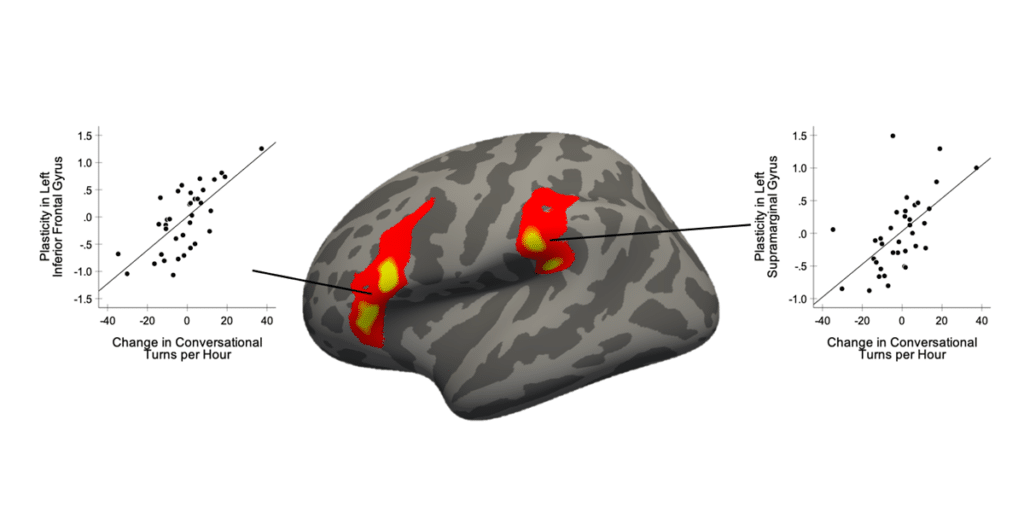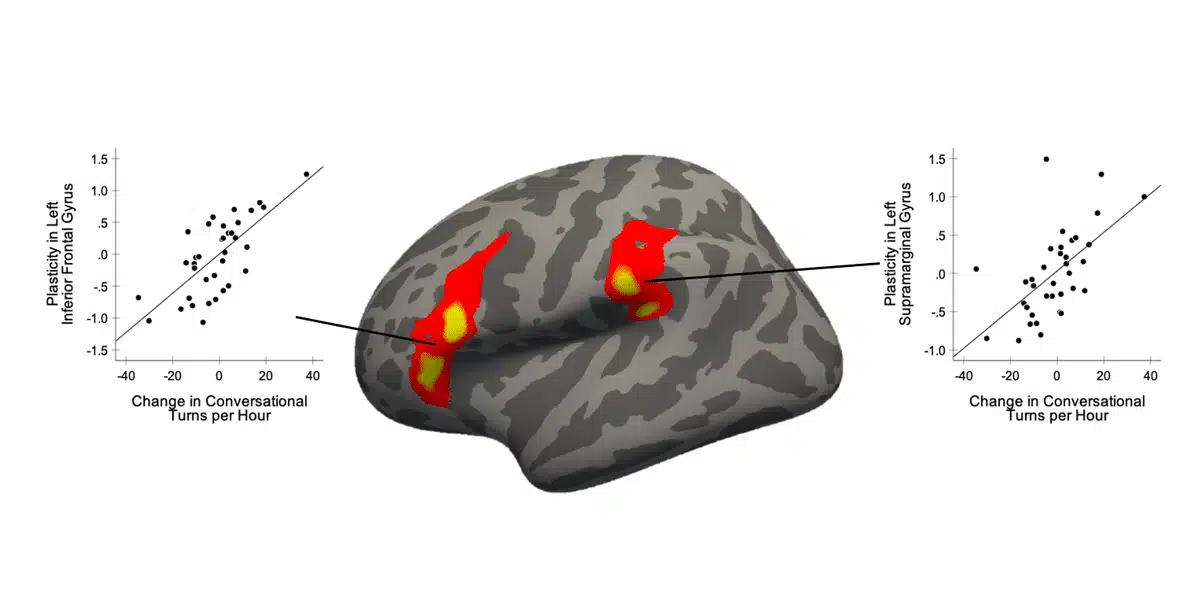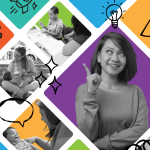A new study published in the June 2021 issue of Developmental Cognitive Neuroscience maps out an important chain of connections linking family-based interventions, adult-child conversational turns, and brain growth in children. A group program for families designed to enhance language environments resulted in an increase in conversational turns between parents and children. In turn, that increase in conversational turns was positively correlated with brain growth and increases in children’s scores on language, executive function, and reasoning assessments.

Bringing a community focus to research design
A team from Massachusetts Institute of Technology and Harvard University, led by Dr. Rachel Romeo, conducted a longitudinal study to investigate how children’s brains changed in response to a randomized controlled trial of a family-based intervention. The study was a collaboration between MIT-Harvard and several Boston-area public schools that serve primarily lower-income families. Through the partnership, the schools were able to weigh in on the research questions and help with participant recruitment.
“Something we face in the research community a lot is this pushback of, ‘I don’t know you, you don’t know me,’ and it can be challenging to start a dialogue,” Dr. Romeo said. “Working through the schools as a trusted community partner was really important for building buy in and creating a feedforward/feedback model of community-based input on what the community would like to see in their kids and families and how can we help facilitate those outcomes and study them at the same time.”
The schools were particularly interested in whether a family-based intervention could impact executive function skills, which are brain-based measures of attention that pave the way for many aspects of academic success. Fifty-two families with 4- to 6-year-old children participated, with half randomly assigned to a control group and half to an intervention group.
The intervention, known as “Parents and Children Making Connections — Highlighting Attention (PCMC-A),” is designed to boost adults’ responsiveness to children, teaching them strategies to regulate their family’s stress, practice contingency-based discipline, increase their responsiveness and use of language with their child, and facilitate their child’s attention. Families attended eight weekly small-group sessions with two hours of interactive curriculum. Children simultaneously attended 45-minute sessions with games and activities designed to help them learn to regulate their attention and emotions.
The research team used LENA technology to measure families’ home language environments before and after the intervention. They used structural magnetic resonance imaging (MRI) to investigate changes in the children’s brains.
The evolving role of demographics in research
The research team sought to recruit a demographically diverse sample for the study. In accordance with best practices, they chose to report race and ethnicity data for descriptive purposes, but did not use it as a variable for analyses. Dr. Romeo said that, like many other organizations, her team has done lot of research and introspection over the past year around how they collect and use demographic data.
“When we’re doing neuroimaging, we’re looking at a biological construct, so we have to be really careful in how we describe the other measures that we’re correlating with brain measures,” Dr. Romeo said. “Race is a social construct, but it’s so commonly misconstrued as a biological construct. Race is not what explains differences in neuroimaging or cognitive outcomes. It’s all the things that go along with race. It’s a proxy for other factors like systemic barriers and discrimination. But we also don’t want a homogenous, all-white, upper-class sample — which is common in a lot of research — because that’s not representative and may bias our findings. So we collect demographic data for descriptive purposes, but not for analytical purposes.”
Key findings
Families who completed the intervention increased the number of back-and-forth exchanges, or conversational turns, they had with their children. The researchers also found that children who engaged in more conversation showed increased growth in two key regions of the brain associated with language.
“These results represent the first longitudinal investigation into the mechanisms of neuroplasticity that underlie changes to children’s language environments and suggest that conversational turns support children’s language development through growth in specific left perisylvian brain regions,” the paper explains.
The researchers didn’t see differences in language scores between the control and intervention groups but did find that families who had the greatest increase in turns also experienced the greatest increases in language, executive functioning, and reasoning scores — cognitive gains across the board that were less linked to the intervention and were more linked to increases in conversational turns.
“It’s not that the intervention wasn’t successful,” said Dr. Romeo. “Rather, it helped us identify a mechanism through which specific families can best be supported.”
Importantly, the results were not affected by families’ socioeconomic status, indicating that the intervention benefited families regardless of the parents’ income or education level.
“This is the first study I’ve seen that has directly tied family-based intervention effects to changes in a child’s brain,” said Dr. Jill Gilkerson, LENA’s Chief Research and Evaluation Officer. “I didn’t think this would be measured in my lifetime, and it’s amazing to see. I’m thrilled that LENA technology has been used to quantify and measure these outcomes. Without this automated analysis of the natural language environment, the relationship between conversation and brain growth would have been invisible. This is truly a groundbreaking investigation that illuminates how conversational turns build children’s brains.”
This new study builds on past research from Dr. Romeo which also investigated the relationship between conversation and children’s brain structure and function. To learn more about her research, we invite you to watch this webinar about the link between conversational turns and brain development, called “The Power of Conversational Turns.”
[callout]



